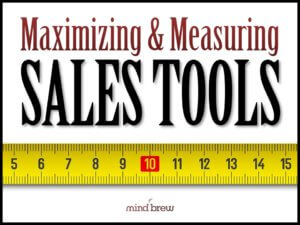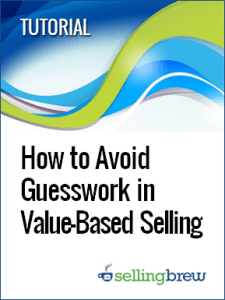As regular readers can attest, we at the SellingBrew Playbook are proponents of addressing the true root causes behind apparent sales problems. In fact, it might be more accurate to say that we’re “rabid advocates” or “relentless nags” since we take every opportunity to beat the drum about the concepts. And in our defense, there are good reasons behind our aggressive advocacy.
First of all, there is simply no more effective way to produce improvements that can actually “stick” over the long haul.
Unfortunately, when you treat the symptoms without addressing the root causes behind those symptoms, any improvements will be temporary and the symptoms will just keep coming back, again and again. But by addressing the underlying root causes, you can eliminate the symptoms, once and for all, at their source.
But beyond the sheer efficacy of the approach, the other reason we push so hard is that we’re pushing against an entrenched status quo.
After all, treating obvious symptoms is such an intuitive approach that few will ever question it. And most groups have been treating obvious symptoms for so long that it’s become their default or go-to approach. So to get people to even contemplate doing something else, we’ve felt the need to be much more forceful and persistent in our root cause advocacy.
All that being said, we don’t want to give anyone the impression that what we’re advocating for is an “either/or” proposition.
We’re certainly not suggesting that you completely ignore the obvious symptoms while you focus exclusively on identifying and addressing the underlying root causes behind those symptoms. That would be like suggesting that you ignore a raging house fire in progress, while you track down the arsonists and work to understand and address their underlying motivations.
Of course, stopping the arsonists will prevent fires in the future. But as it’s causing damage in the here and now, the house fire in progress needs to be put out ASAP.
Now, you might focus on the house fire first. And once that’s out, you’ll go hard after the arsonists. Or you might have part of your team extinguishing the house fire, while another contingent is tracking down the arsonists in parallel. But no matter the sequence, both things need to happen.
So it’s not an “either/or” proposition…it’s an “and.”
Frankly, many sales operations are only treating symptoms right now. And as a result, they’re spinning their wheels and not being as productive or strategic as they really need to be. All we’re suggesting…in the strongest terms possible, mind you…is that these groups would be far more effective were they to address the symptoms AND the underlying root causes.
Not one or the other, but both.
Is it more work? Not at all. There might be some different work in the beginning, as you conduct root cause diagnostics. But overall, it ends up being less work as there are fewer and fewer symptoms to treat.
Back to the house fire analogy, there might be some different work in the beginning as you also investigate the arsonists. But there’s less work overall, because you’ll have fewer house fires to deal with once the arsonists are behind bars.
While analogies are never perfect, I think this one works pretty well. Feel free to borrow it 🙂














